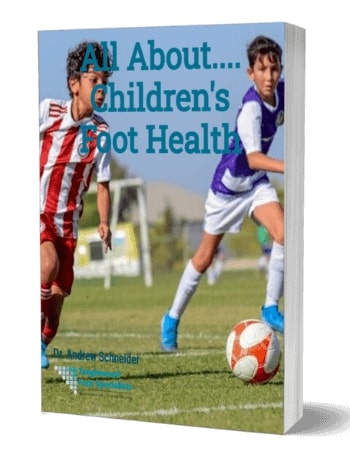Important: No child's foot should hurt. If your child is experiencing foot pain, it's a sign that something is wrong and needs attention before summer camp begins.
Common Foot Problems That Can Ruin Summer Camp
Summer camp is a time for adventure, making new friends, and creating lasting memories. However, unaddressed foot problems can quickly turn this exciting experience into a painful ordeal. Here are three common foot issues that should be addressed before your child heads off to camp:
1. Ingrown Toenails
Ingrown toenails occur when the edge of the toenail grows into the surrounding skin, causing pain, redness, and swelling. At camp, where children are constantly active, an ingrown toenail can become severely infected.
 Warning Signs:
Warning Signs:
- Pain or tenderness along the nail edges
- Redness or swelling around the toenail
- Your child hiding their feet or avoiding barefoot activities
- Difficulty wearing shoes comfortably
Consequences if left untreated: An infected ingrown toenail at camp can lead to severe pain, limited mobility, and potentially an early return home. Treatment may require antibiotics and a minor procedure that could keep your child from enjoying camp activities for days.
2. Plantar Warts
Plantar warts are caused by a virus that infects the top layer of skin on the bottom of the foot. They spread quickly in camp environments where children share showers and pool areas.
 Warning Signs:
Warning Signs:
- Small, rough growths on the bottom of the foot
- Black pinpoints (small, clotted blood vessels)
- Pain when walking or standing
- Your child walking differently to avoid pressure on the wart
Consequences if left untreated: Plantar warts can multiply rapidly and spread to other campers. The pain can prevent participation in activities, and treatment at camp may be limited. Worse, your child might spread warts to other campers, creating a camp-wide issue.
3. Heel Pain (Sever's Disease)
Heel pain in children aged 8-14 is often caused by Sever's disease, an inflammation of the growth plate in the heel. This is especially common in active children and can be severely aggravated by the increased physical activity at camp.
 Warning Signs:
Warning Signs:
- Pain in one or both heels
- Limping or walking on tiptoes
- Difficulty participating in sports or running
- Pain that worsens with activity
- Your child wanting to sit out activities they usually enjoy
Consequences if left untreated: Severe heel pain can make walking unbearable, potentially resulting in your child missing out on camp activities or even needing to come home early. Treatment may require rest, custom orthotics, and physical therapy.
The Real Cost of Ignoring Foot Problems Before Camp
Emotional Impact:
- Missing out on activities and bonding with new friends
- Feeling isolated or left out during camp events
- Disappointment from potentially going home early
- Embarrassment about foot conditions among peers
Financial Impact:
- Expensive emergency medical treatments away from home
- Potential early pickup and lost camp fees
- More extensive treatments required for conditions that worsen
- Possible need for follow-up appointments after camp
Pre-Camp Foot Health Checklist
- Schedule a foot check-up with a podiatrist if your child has shown any signs of foot pain or problems
- Examine your child's feet for any signs of ingrown toenails, warts, or other issues
- Ensure proper footwear for camp activities (hiking boots, athletic shoes, water shoes)
- Pack appropriate socks that wick moisture and prevent blisters
- Include basic foot care items in their camp kit (bandages, anti-fungal powder)
Remember: Children often don't complain about foot pain until it becomes severe. Be proactive and check their feet regularly, especially before sending them to camp where they'll be very active and far from home.


